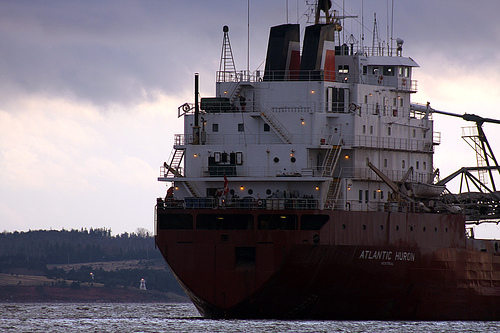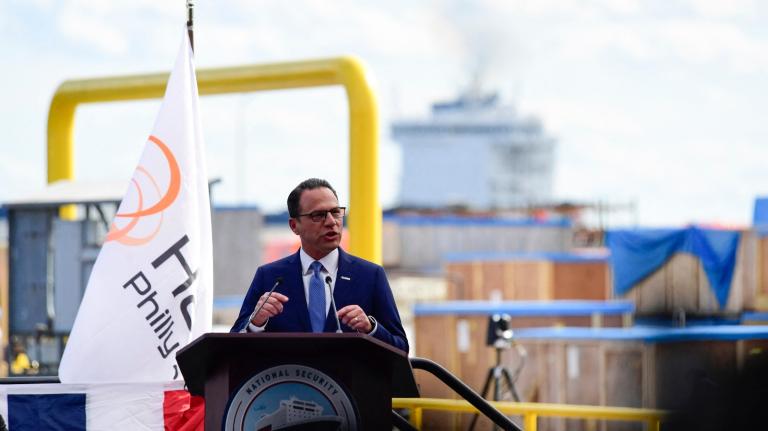America’s use of coal to generate electricity is dropping dramatically. And yet coal production remains fairly constant.
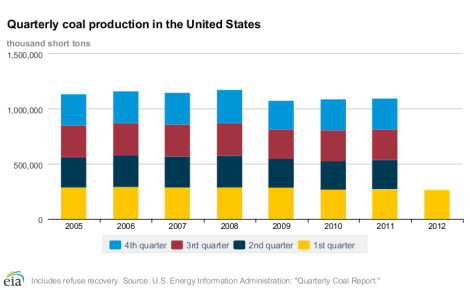
Click to embiggen. (Image courtesy of the Energy Information Administration.)
What gives? Who’s using all of that coal? Is it being put into baby and/or puppy food?
No. A lot of it is going overseas.
As we reported earlier this week, American coal is partly responsible for China’s huge increase in coal consumption. But that’s just one part of the puzzle. Yesterday, Democrats on the House Natural Resources Committee released a report, “Our Pain, Their Gain: Mountains Destroyed for Coal Shipped Overseas” [PDF], that outlines the scale of America’s coal exports.
Coal exports have nearly doubled since 2009 to 107 million tons last year, now accounting for almost 12 percent of U.S. production. Three out of every four tons that are exported come from the Appalachian region, and often this coal is produced by mountaintop removal mining — a devastating practice that has blanketed communities with soot, contaminated drinking water, and destroyed 2,000 miles of streams.
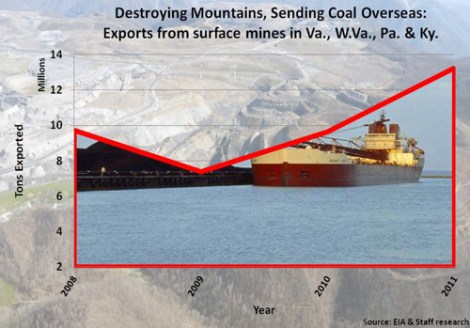
Some key data points from the report:
- 97 mountaintop removal, steep slope, and surface mines in West Virginia, Pennsylvania, Kentucky, and Virginia exported American coal overseas in 2011, compared to 73 in 2008.
- Coal exports from surface mines in these four states have grown by 91 percent since 2009 to 13.2 million tons in 2011.
- Twenty-five of these mines exported more than half of their production in 2011. And six of these mines exported nine out of every 10 tons they produced last year.
- Overall, these 97 mines exported 27 percent of their production in 2011.
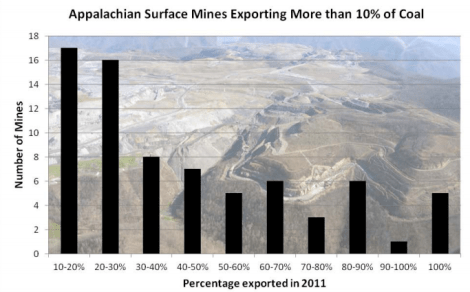
There are two ways to address the problem. The first is the approach taken by the House Democrats: raise awareness of the issue. The second is to restrict the ability for coal to be exported.
Sen. Jeff Merkley (D-Ore.) is trying the second approach on the other side of the country. This week, he called for “a sweeping federal review of coal exports from the Northwest.”
The government should look at the effects of large-scale exports from all the Northwest coal export projects in the hopper, and evaluate mining, local impacts such as train and barge traffic and global issues such as global warming.
Most of the coal exported from the country goes out from ports on the East and Gulf coasts. Merkley’s actions would specifically impact proposed expansions of shipping points on the West Coast.
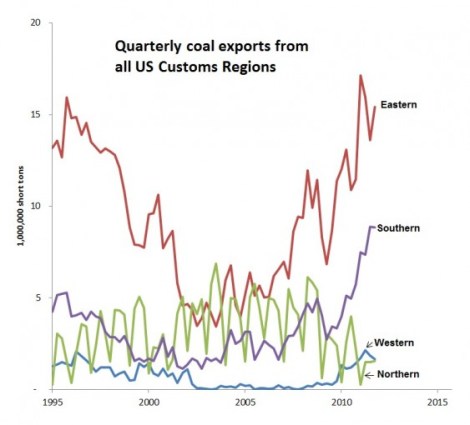
Chart created by Sightline using data from EIA’s Quarterly Coal Report.
Anyway, it occurs to us: There are three ways to address the problem. The third is to transition away from coal and make other means of energy production the norm around the world. It’s just that raising awareness of exports and trying to completely shut off ports — however long the odds of success — are far more likely to happen over the short term.
Here’s our mantra. Let’s take the coal out of power production, and keep it where it belongs: a few hundred feet underneath dirt and trees in Appalachia.
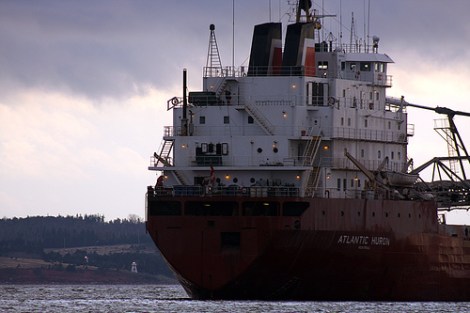
A ship unloads coal. (Photo by Martin Cathrae.)

